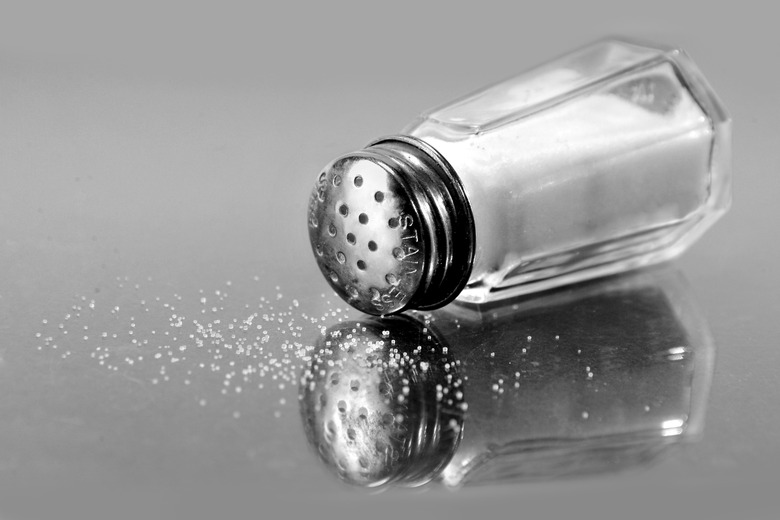Why Do Ice & Salt Together Burn The Skin?
Putting a layer of salt on your skin and then holding an ice cube on it is a good way to create a lot of pain and a permanent scar. The combination burns your skin, not with heat, but with cold, in much the same way excessively cold air can burn exposed skin on a winter's day. The burn is caused by frostbite, and it happens because salt lowers the temperature at which ice melts.
Adding Salt to Ice
Salt lowers the melting point of ice. That's why many communities spread salt on the road in winter, and it's the reason for the discrepancy in the zero points of the Fahrenheit and Celsius temperature scales. Whereas zero on the Celsius scale is the freezing point of pure water, on the Fahrenheit scale it's the freezing point of a mixture of water and ammonium chloride, which is a salt. The ability of salt to lower the melting point of ice is well known by traditional ice cream makers, who add salt to the ice surrounding a bucket of cream to lower the temperature of the cream far enough for it to freeze. Without the addition of salt, the cream wouldn't freeze.
How Salt Lowers the Temperature
When pure water is kept at its freezing point, the number of molecules breaking their bonds from the solid state and entering the liquid state is equal to the number undergoing the reverse process. Adding salt to the mixture reduces the concentration of water molecules in the liquid state, slowing down the rate of freezing. The melting rate is unaffected, though, and continues to draw the same amount of heat, which is needed for the molecules to break their hydrogen bonds. Because the freezing rate has decreased, less heat is added to the system, so the temperature goes down. This is why ice feels so much colder on your skin when you add salt.
Cold Enough for Frostbite
If you put an ice cube on your skin and hold it there, the temperature of your skin will remain at 0 degrees Celsius (32 degrees Fahrenheit). That's cold and uncomfortable, but it isn't cold enough to cause frostbite. However, if you put a layer of salt on your skin first, the temperature of the ice can quickly drop to minus 21 degrees Celsius (minus 6 degrees Fahrenheit) or lower, which is cold enough for frostbite to occur. The risk of frostbite increases with the amount of time the ice is in contact with your skin.
Frostbite Is Serious
Frostbite occurs when the skin freezes, and like burns, there are three degrees. With first-degree frostbite you feel tingling and discomfort, but everything returns to normal when the area is warmed. Blisters form in second-degree frostbite, but they eventually heal. Third-degree frostbite involves permanent damage to the skin tissues. The affected area may turn black or yellow, red blisters may form and sensation is lost until the area rewarms. At that point, dull, throbbing pain and itching and burning sensations begin, and they can persist for several days or even months until the formation of scar tissue is complete.
Cite This Article
MLA
Deziel, Chris. "Why Do Ice & Salt Together Burn The Skin?" sciencing.com, https://www.sciencing.com/ice-salt-burn-skin-6554297/. 13 March 2018.
APA
Deziel, Chris. (2018, March 13). Why Do Ice & Salt Together Burn The Skin?. sciencing.com. Retrieved from https://www.sciencing.com/ice-salt-burn-skin-6554297/
Chicago
Deziel, Chris. Why Do Ice & Salt Together Burn The Skin? last modified March 24, 2022. https://www.sciencing.com/ice-salt-burn-skin-6554297/
